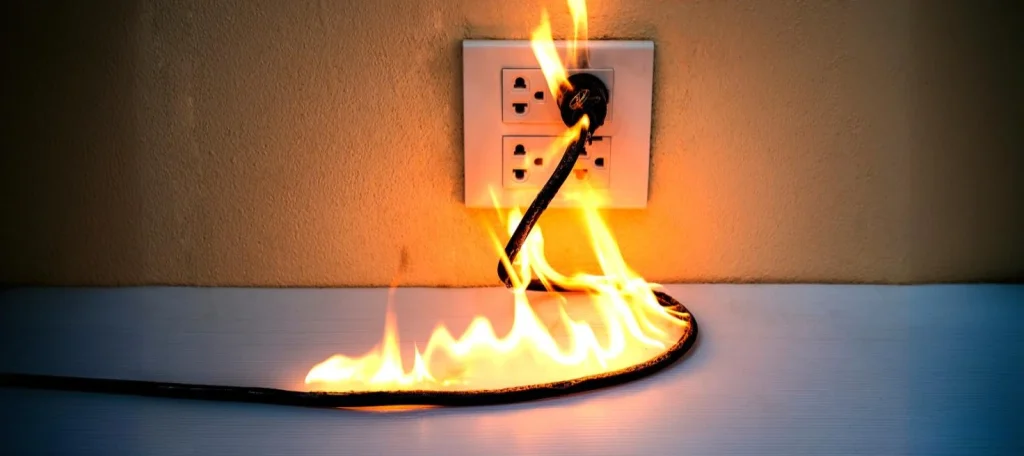A building’s electrical system consists of several components that enable the functionality of electrical equipment. Earthing and grounding are two such important components which also ensure the safety of a building and its occupants, thus acting as indispensable aspects of construction. Read on to learn what earthing is, why it is important, types of earthing equipment and considerations for electrical grounding system design.
What is Earthing?
The method of transferring excess electrical currents from a building to the earth’s subsurface is known as earthing. This is achieved by connecting all the electrical components of a building to the earth’s mass through earthing wiring, equipment and grounding system designs. Low resistance wires, along with conductive devices that are buried underground, are generally used to carry excess current and disperse it at safe levels below the ground. An earthing system is one of the most important electrical safety measures in a building.
What is the Use of Earthing?
Earthing is a crucial aspect of any building due to several reasons, the most important one of which are:
- Life Protection: Live wires, open circuits or exposed plug points can cause electrical shocks in humans, which may be minor or major, and pose serious threats to human life. Earthing devices help safely dispense such currents to the ground, minimising the risk of shocks and ensuring human safety.

- Property Safety: During voltage surges or other malfunctions, electrical equipment like refrigerators, air conditioners, heaters, laptops, televisions, lifts and washing machines can experience irreversible damage due to the flow of increased currents. Earthing helps prevent this damage and ensures the efficient functioning of all the electrical devices in a building.
- Hazard Prevention: Malfunctioning electrical equipment can cause shocks and fires, endangering a building’s structural safety. Even natural hazards like lightning and floods can lead to the failure of electrical equipment or the discharge of excess currents. Grounding devices help transfer these currents and mitigate their risks, also forming an important part of lightning protection systems in buildings.
Types of Earthing
Earthing can be achieved by various methods and some of the most common types are:
Plate Earthing
In this method, a copper plate or a GI plate (generally of size 0.6m x 0.6m x 0.05m) is placed vertically inside the earth at a depth of around 3m. Alternative layers of coal and salt are placed around this plate, acting as insulators with water being poured regularly. The plate is connected to the earthing wiring and electrical devices in the building and functions like an electrode that transfers currents to the ground. This system is ideal for small to medium sized residences.
Pipe and Rod Earthing
Pipe earthing consists of a Galvanised Iron (GI) or copper pipe around 2m in length which is buried at a depth of 4-5m in constantly wet ground. Layers of charcoal and salt surround this pipe. Although earth rods and pipes can carry and dispense much larger currents than plate earthing systems, they are susceptible to damage in cold climatic conditions. Copper grounding rods can also get rusted more easily than plates.
Chemical Earthing
Chemicals like copper sulphate are used to treat soil and decrease its resistance to electrical currents, helping disperse the currents more easily. Chemical earthing cannot be used as a standalone mechanism, but is typically used along with other earthing systems. Although helpful in tricky soil and climatic conditions, the use of strong chemicals can negatively affect soil health.
Water Pipe Earthing
This system consists of a separate water pipe installed with the earthing wiring to deflect electrical currents in the ground. Although not used commonly in modern construction, this method is one of the simplest ways to ensure earthing and was very common in old buildings.
Factors that Affect an Earthing System
Earthing power or efficiency is affected by local and project specific factors such as:
- Groundwater Level: The level of the water table in the area determines the maximum depth at which an earthing system can be buried. Close proximity to groundwater must be avoided to ensure safety.
- Soil Type and Resistivity: Different types of soil have different capacities to disperse currents. Soil with high organic content generally has low resistivity to currents, meaning that it provides effective earthing. On the other hand, sandy soils have very high resistivity and cannot easily dissipate electrical currents.
- Moisture Content and Temperature: Increased moisture content in the ground decreases its resistivity, while decreased temperatures mean increased resistivity. This means that ideal earthing conditions are achieved in higher temperatures with soil that has high moisture content.
Methods of Improving the Earthing System
The effectiveness of an earthing system can be enhanced by decreasing the earth’s resistance to electrical currents. This can be achieved by the following means:
- Increasing the depth of earthing systems means that soils with lower resistivity can be reached.
- Increasing the size and number of grounding devices increases the effective area of contact with the soil.
- Water content: Keeping the grounding equipment constantly wet can decrease the soil resistivity.
- Treating the Soil: Removing debris, waste and rocks and treating the soil with non-corrosive elements like ordinary rock salt and magnesium sulphate can decrease resistivity.
- Electrolytic Grounding Electrodes: These are special electrodes filled with electrolytes that can flow into the surrounding soil and decrease its resistivity.
Ensuring the Best Earthing System for Home
Earthing is an important process of construction that safeguards human life, property and built structures. Soil testing reports and site surveys must be carefully studied to ensure adequate and effective electrical planning. Brick & Bolt, a leading construction company in India, provides design-to-build construction services that prioritise safety and efficiency in all aspects including electrical services. To ensure the best earthing for home and commercial units, contact Brick & Bolt to undertake your construction project today!

